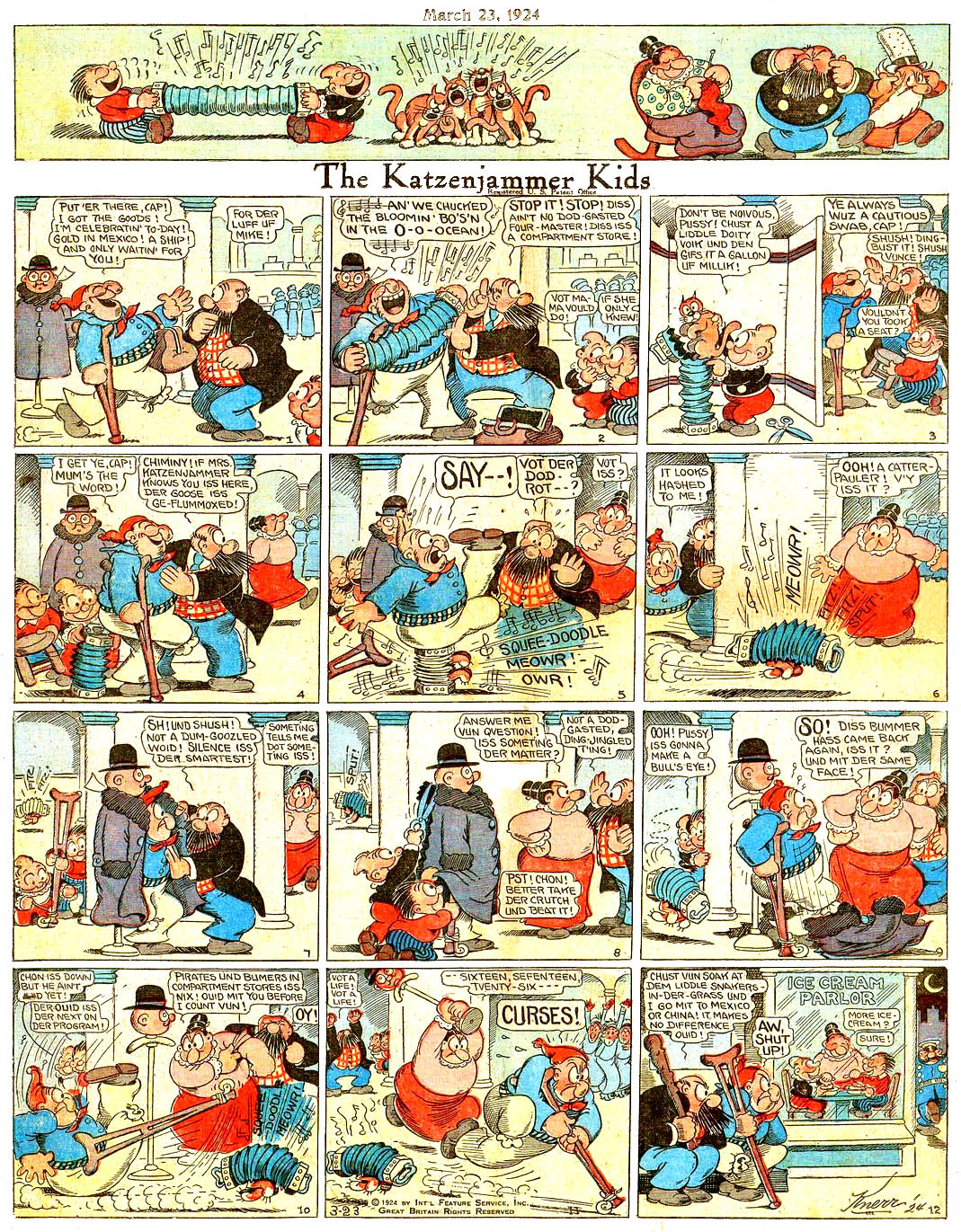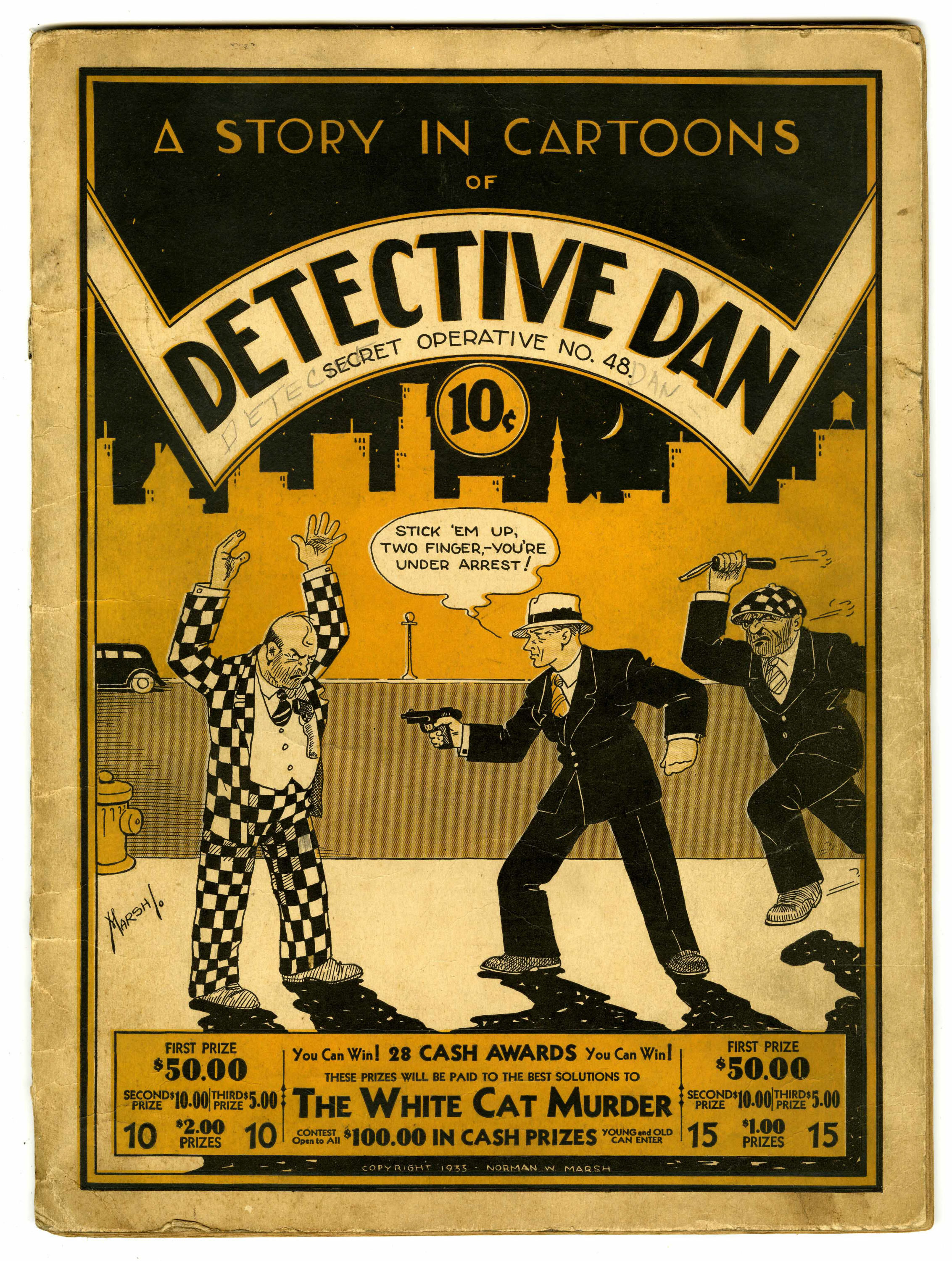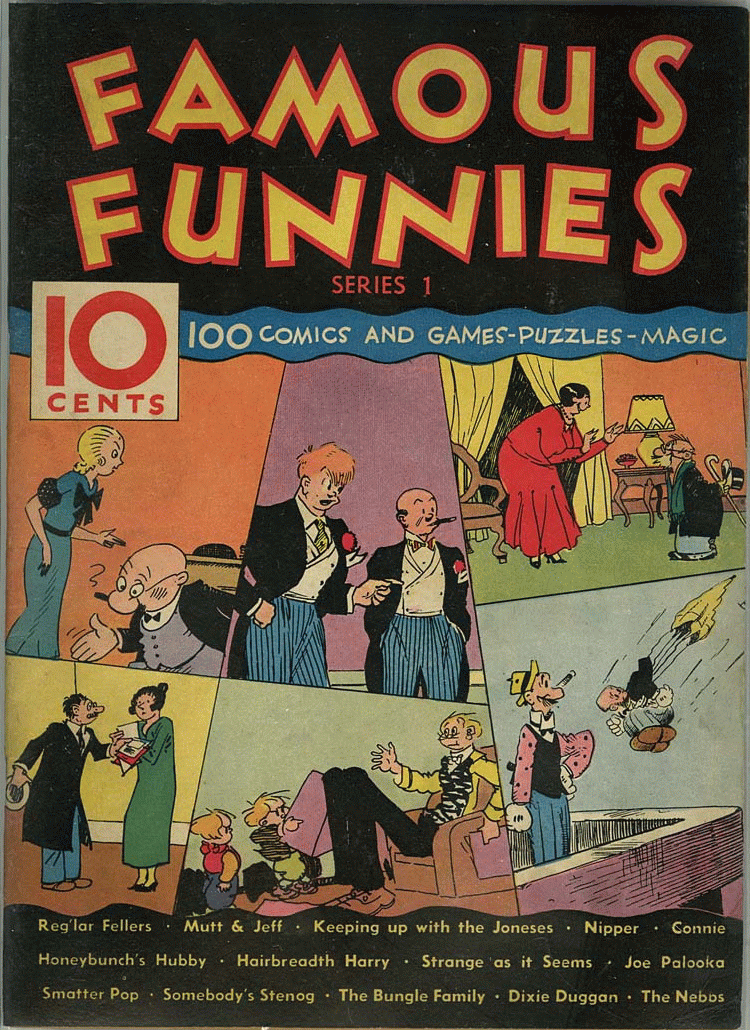Welcome to another edition of Sequential History, where we’ll be taking a look at some of the events and people that helped shape the comic book as we know it. Last time around we talked about the very beginnings of the medium in Sequential History: The Birth of Sequential Art (Pre-History to the Platinum Age). I suggest checking it out if you haven’t already. This time we’re focusing on comic history from the year 1897 through 1938, commonly referred to as the Platinum Age.
I’d like to consider for a moment, these “ages” that we’re going to be talking about. They aren’t necessarily based on dates in a calendar. For example, it’s widely acknowledged that the Silver Age began with the publishing of Showcase #4 in October of 1956. This isn’t significant because of the date, or because of what was going on in 1956. The significance lies in the fact that this issue featured the first appearance of Barry Allen, the Silver Age Flash. Moreover, its a specific era of comics that began with this issue, that’s defined by the content of the books, the direction that comics in general took. The start of the Silver Age has been traced back to this milestone book. So, it’s the comics themselves, not the dates, that really determine how these ages have been defined. Therefore, as you might imagine, there is some disagreement on the subject. Just wait until we get to the end of the Silver Age, and you’ll see what I mean. For the most part however, we’re going to be using the most widely accepted definitions of the ages.
The Platinum Age
Taking all of that into consideration, we can now discuss the beginning of the Platinum Age. A beginning that took place in 1897, with the publishing of The Yellow Kid in McFadden’s Flats. This book has been considered to be the very first comic book, and to contain America’s very first comic character, the Yellow Kid. It even contains that phrase, “comic book”, on its back cover. There is of course, some debate over which book really was the first comic book. Regardless of that, we’re going with 1897 as the beginning of the exciting Platinum Age. Now, for those of you who have been following our narrative from the beginning, you may be wondering where in the world the superheroes are hiding? I can understand that, I mean, we are talking about comic books here, and most people probably wouldn’t think that you could have a comic without a superhero. Well, worry no longer, because today we’ll meet our first heroes, both the super and those not so much.
It doesn’t take too long for things to get rolling. In 1899 the black and white Funny Folks, containing reprints from Puck magazine, was published in hardcover format. It was followed by 1901’s The Blackberries, which is thought to be the first full color comic book. We’ve reached our first milestone! The first full color comic, truly amazing stuff. Remember that this took place 109 years ago, and you get a sense of its magnitude. Color on the cover, and throughout the book. This at a time when most of the world had yet to see a moving picture.

There were several books to follow. Richard Outcault, creator of the Yellow Kid, had Buster Brown published in 1902. A good success, it inspired, and was copied by several others. At this point in their development, comics didn’t resemble what we have today. Many were hard cover, with some costing 50 cents. They were also quite sizable, and many books were using a 17″ x 11″ format, which was becoming something of a standard size. This format continued on for a few years, with books such as The Katzenjammer Kids (which Stan Lee read as a child), Little Nemo and Happy Hooligan using it.
Mutt and Jeff, created by Bud Fisher, changed things up a bit in 1910, being offered in a 15″ x 5″ format. This was a daily newspaper strip which, while not being the first of its kind, was definitely the first to find real success. It featured recurring characters, multiple panels in each strip, and a regular, daily schedule. The 15″ x 5″ hardcover book, was a collection of reprints from the newspaper originals that first appeared in print in 1907. Mutt and Jeff became a big hit, and remained in publication until 1982.
The strip below is a Mutt and Jeff daily from 1913. If you read it (click to enlarge) you’ll notice something that betrays the time in which this was published. Basically, a man applying for a job as a motorcycle cop is asked if he is “colored or white?” “White of course,” he replies, and the questions proceed. I think this is interesting because it gives us a glimpse back to that time. We all know that things in this country were hard for non-white folks in years past. I know for myself, when I’m reading a comic, or doing research for a column like this one, I don’t really think about what society was like when a certain work was originally created. However, with this Mutt and Jeff strip, and many others from that time, you see a reflection of certain traits of society, however undesirable they may be. This issue became a problem for some, and really came to light in 1955 when William Gaines published a story that the CCA (Comics Code Authority) initially rejected; that is, unless Gaines changed the race of the main character. You can see how that turned out here.
Things are progressing quite nicely. We have comic books, we have dialogue, we have panels, and even full color books. There are however, a few important firsts that we have yet to see. Let’s take care of one of them right now.
First monthly comic
In 1922 the very first monthly comic book was published. Comics Monthly had a cover date of January, and ran for 12 months. Aren’t we glad they began to do these things monthly? Can you see the modern comic book beginning to take shape? Other monthly books followed, such as Dell Publishing’s The Funnies, debuting in 1929, which featured all original content, in color. Its been described as a newspaper insert by the Library of Congress, so it’s not considered a comic book in the truest sense. It does however, get us to another first, all original content. Up until now, there have been no comic books published monthly that contained original material and not reprints.
Original material
Now, I’d like to make a distinction here, between comic strips published in newspapers, and comic books sold at newsstands. The strips in newspapers came first, and up till now, comic books contained reprints of newspaper strips. That all changed in 1933 however, with the first comic book sold at newsstands with all original material. Detective Dan, Secret Operative No. 48 by Norman Marsh, was the first of its kind. It was a one shot, with a cardboard cover if you can believe it. It’s said that the name Detective Comics was inspired by Detective Dan, Secret Operative No. 48. I love that name, its got to be one of the coolest titles for a comic I’ve seen, so no wonder it had an impact on a later book. It contained all original, never before published artwork. Incidentally, there are examples of this comic still in existence, like the one pictured below, that sold at auction about a year ago for a surprisingly low price.
The Thirties
OK, the 1930s saw the development of some very cool things. First off, free comics became popular in the early part of this decade. This really took off thanks to the depression, deflation, and the need to keep the printing presses in constant operation. It was expensive to shutdown the print presses, and then start them back up at a later time. By continuing to print comics and giving them away, they were able to keep the presses running, while getting some advertising and good will from comic readers at the same time. One of those free books, published in 1933, was Funnies on Parade. This comic is significant for its use of the modern comic book format of 8″ x 11″. One million copies of it were given away within weeks.
The early thirties also saw the development of Superman by two teenagers in Cleveland. In 1933 Siegel and Shuster self published the first version of their new creation, Superman. They continued to refine him off and on over the course of the next few years. However, before Superman was introduced to the world on a grand scale, this creative duo was busy working on other projects. They made their comic debut in October 1935 in New Fun #6. Interestingly, their longest running creation isn’t Superman, it’s Dr. Occult, a magic wielding hero now operating in the DC Universe who first appeared in New Fun #6 back in 1935, almost 3 years before Action Comics #1.
Superheroes
Up until 1938, most comics featured humor, which was the most popular subject material. That began to change in the mid-thirties, with the likes of Dr. Occult, who possessed some degree of super powers. Many heroes of the past were mystical in nature, and some weren’t completely human. There are precursors to the modern, masked hero, such as Zorro (1919), Slam Bradley (1937), and others. One of the very first, if not the original, masked hero in the style of Zorro and Batman, has to be the Scarlet Pimpernel. First appearing in the novel The Scarlet Pimpernel in 1905, Sir Percy Blakeney was an English noble during the early part of the French Revolution. The heroism comes in his going in disguise into Paris, to rescue the nobles there who were being systematically executed by the new French Republic. This guy reminds me of Batman, though I don’t think he wore a cape. Regardless of not having a cool costume, he set the stage for heroes to come. Even though he didn’t appear in a comic book, he was among the first heroes of the style that would develop toward the end of the Platinum Age. I included this bit to show that the hero existed before comic books, and was integrated into the medium during this wonderful Age. However, the hero spotlight was completely taken over in 1938, by the alien from Krypton.
The Platinum Age contributed a lot to the development of comics. It saw the first monthly comic book, the first full color comics, the first all original content in a comic, and the introduction of super heroes into comic books. This brings us to the end of the Platinum Age, and the beginning of the Golden Age, which saw the publication of Action Comics #1, and that is where we’ll pick things up next time. Here’s some more Platinum Age art for your enjoyment.
Click here to read previous editions of Sequential History!
Eli Anthony
eli@comicattack.net









Pingback: Tweets that mention Sequential History: The Platinum Age (1897 – 1938) -- Topsy.com
Pingback: uberVU - social comments
Eli, this is amazing stuff you’ve uncovered here. I had no clue about the origins of these comic book norms, and it’s quality information to know being involved in this industry.
Keep up the good work man- I look forward to your next segment!
Very good article Eli. I really think giving everyone an education on the history behind what we read today is really cool.
Great article. I loved The Scarlet Pimpernel when I read it a few years ago, and like you, I thought him very much like Batman/Bruce Wayne.